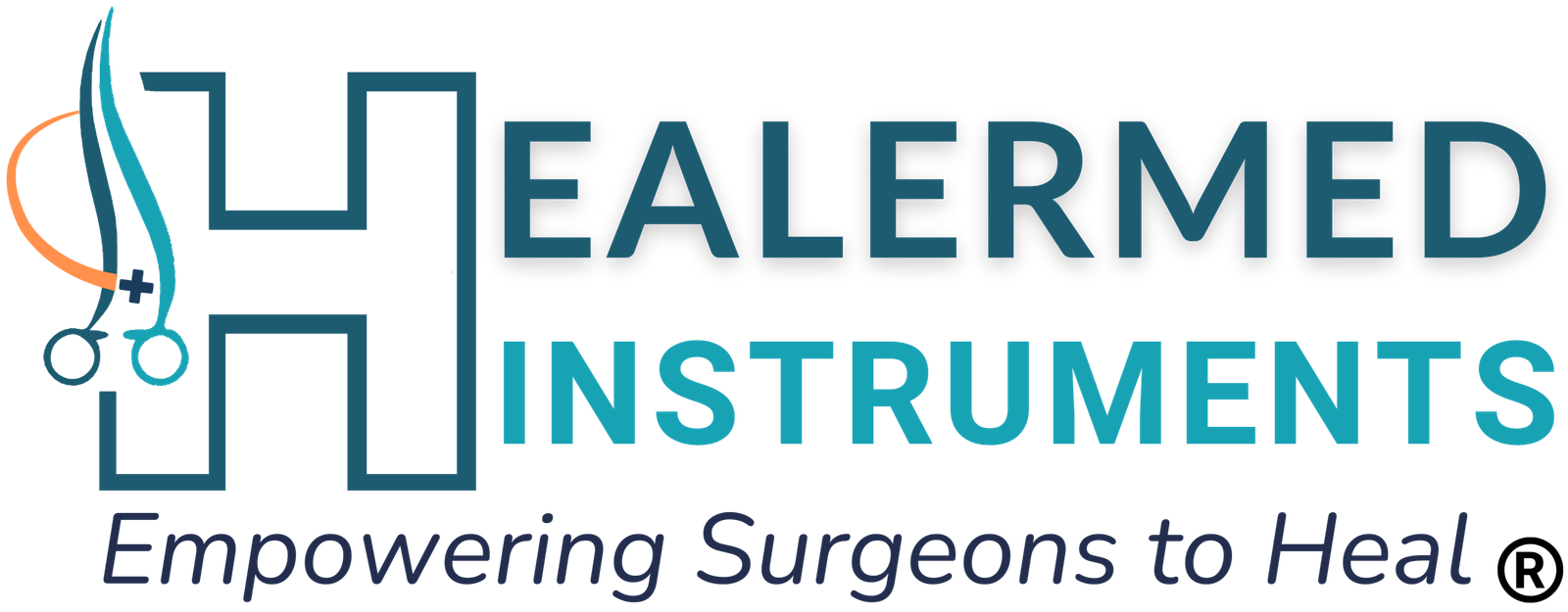The Sterilization Process of Surgical Instruments: Ensuring Safety with Healermed Instruments
Sterilization is a critical component in the production and maintenance of surgical instruments, ensuring they are free from harmful microorganisms and safe for patient use. At Healermed Instruments, we uphold the highest standards of hygiene and safety by employing advanced sterilization techniques. In this blog, we will delve into the specific sterilization methods used by Healermed Instruments, detailing the time, temperature, and pressure parameters to ensure the utmost safety and efficacy.
The Importance of Sterilization in Surgical Instruments
Sterilization is essential to preventing infections and ensuring patient safety during surgical procedures. Surgical instruments that are not properly sterilized can harbor dangerous pathogens, leading to post-surgical infections, prolonged recovery times, and increased healthcare costs. To mitigate these risks, strict adherence to sterilization protocols is crucial for both healthcare providers and manufacturers like Healermed Instruments.
Detailed Sterilization Methods
Healermed Instruments employs a variety of sterilization methods tailored to the specific needs of different instruments. Each method is chosen based on the instrument’s material, intended use, and ability to withstand specific conditions such as heat, moisture, or chemicals.
1. Steam Sterilization (Autoclaving)
Steam sterilization, or autoclaving, is the most widely used and effective method for sterilizing surgical instruments. It involves using high-pressure saturated steam to kill microorganisms, including bacteria, viruses, and spores.
- Temperature and Pressure: Instruments are typically exposed to temperatures ranging from 121°C to 134°C (250°F to 273°F) under pressure of 15 to 30 psi (pounds per square inch).
- Time: The duration of the sterilization cycle varies depending on the temperature:
- 121°C (250°F): A typical cycle lasts 15-30 minutes.
- 134°C (273°F): A shorter cycle of 3-5 minutes is often used for rapid sterilization.
Healermed Instruments utilizes state-of-the-art autoclaves that ensure precise control of temperature and pressure, guaranteeing complete sterilization and compliance with international standards.
2. Ethylene Oxide (ETO) Sterilization
Ethylene oxide (ETO) sterilization is employed for instruments that are heat-sensitive and cannot withstand the high temperatures of steam sterilization.
- Temperature and Pressure: ETO sterilization is conducted at temperatures between 37°C and 63°C (99°F and 145°F), with pressure maintained at 450 to 700 mmHg.
- Time: The process typically takes 2 to 5 hours, followed by an aeration phase of 8 to 12 hours to ensure complete removal of residual gas.
ETO gas effectively penetrates the instrument surfaces, killing microorganisms while preserving the integrity of delicate materials. At Healermed Instruments, we ensure that instruments undergo thorough aeration post-ETO sterilization, making them safe for patient use.
3. Plasma Sterilization
Plasma sterilization uses hydrogen peroxide gas plasma to sterilize instruments, making it suitable for heat-sensitive and moisture-sensitive materials.
- Temperature and Pressure: The process operates at low temperatures, typically around 50°C (122°F), under a vacuum environment with low pressure.
- Time: Sterilization cycles generally last 45 to 75 minutes.
This method is effective against a wide range of microorganisms and offers rapid cycle times with minimal environmental impact. Healermed Instruments employs advanced plasma sterilizers to ensure efficiency and safety.
4. Dry Heat Sterilization
Dry heat sterilization involves using high temperatures in a dry environment to achieve sterilization.
- Temperature and Pressure: The process is conducted at temperatures ranging from 160°C to 180°C (320°F to 356°F), with no added pressure.
- Time: Sterilization times vary based on temperature:
- 160°C (320°F): Requires approximately 2 hours.
- 170°C (338°F): Typically takes 1 hour.
- 180°C (356°F): A cycle time of 30 minutes is sufficient.
This method is particularly effective for sterilizing metal instruments and glassware that can withstand higher temperatures. Healermed Instruments uses cutting-edge dry heat sterilizers that ensure uniform heat distribution and precise temperature control.
5. Chemical Sterilization
Chemical sterilization involves immersing instruments in chemical solutions to achieve sterilization. It is used for instruments that cannot tolerate high temperatures or steam.
- Temperature and Pressure: Typically conducted at room temperature, with no additional pressure required.
- Time: The duration varies based on the chemical used but generally ranges from 30 minutes to several hours.
Healermed Instruments follows strict protocols for chemical sterilization, ensuring instruments are thoroughly rinsed and dried to eliminate any chemical residues before use.
Quality Assurance and Compliance
At Healermed Instruments, we are committed to maintaining the highest standards of quality and safety. Our sterilization processes adhere to international guidelines and standards, including ISO 13485 and the FDA's Good Manufacturing Practices (GMP). Regular quality assurance tests and audits are conducted to ensure our instruments meet stringent hygiene and safety requirements.
Conclusion
Sterilization is a fundamental step in ensuring the safety and effectiveness of surgical instruments. At Healermed Instruments, we employ advanced sterilization techniques and adhere to strict quality assurance protocols to provide healthcare professionals with the tools they need for safe and effective patient care. Trust Healermed Instruments for top-quality, sterilized surgical instruments that prioritize patient safety and satisfaction.
-500x250.png)





